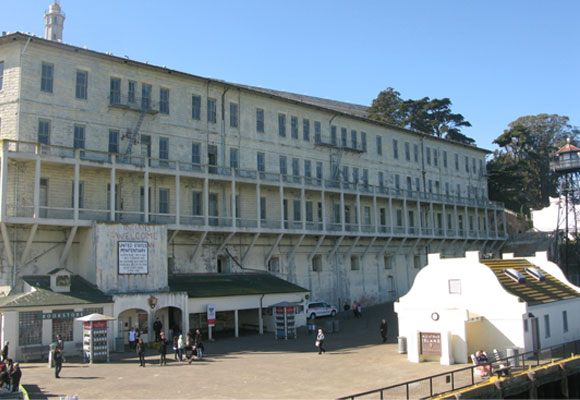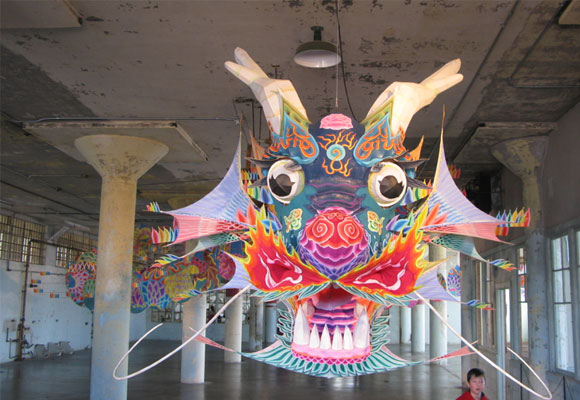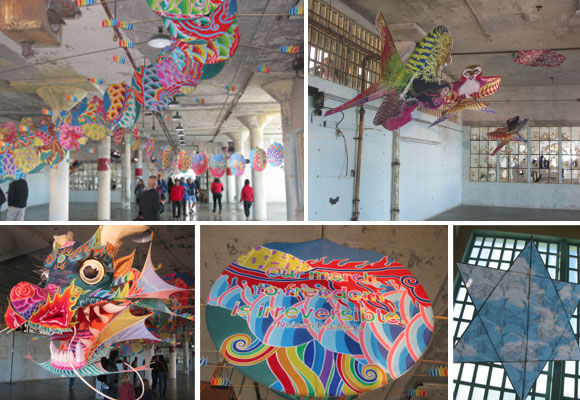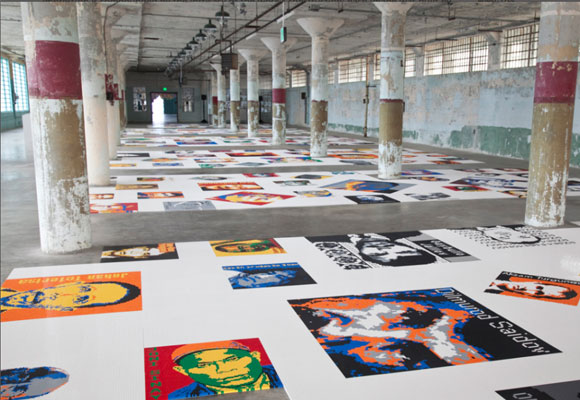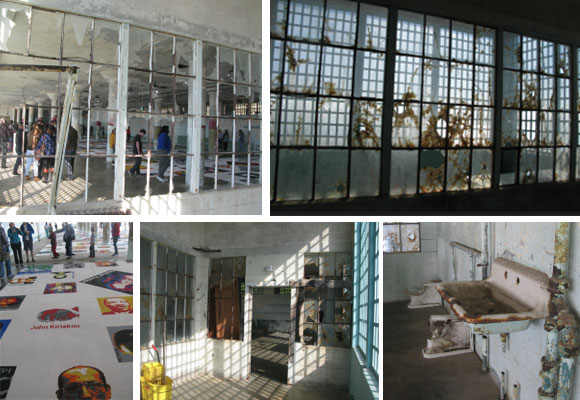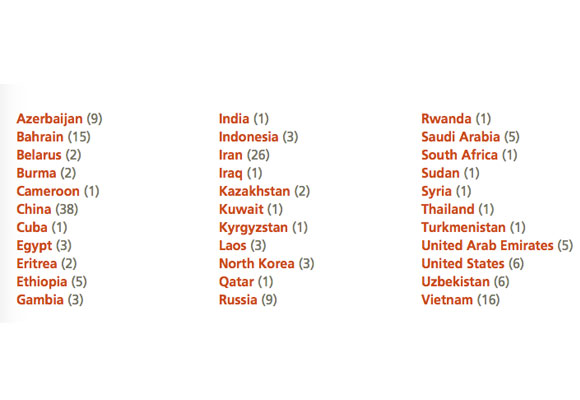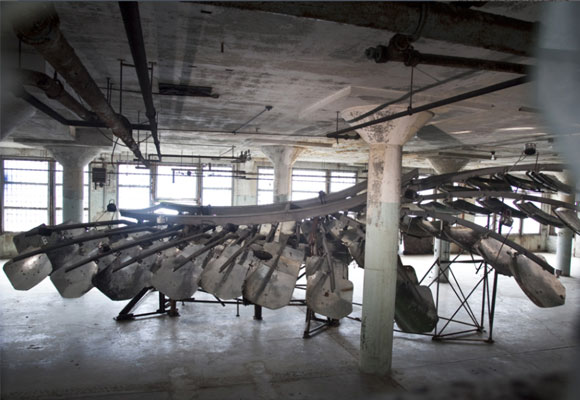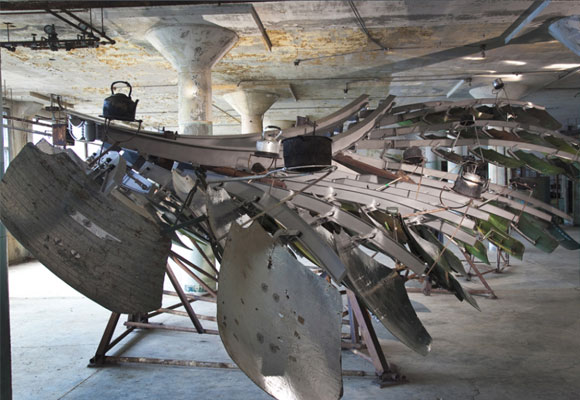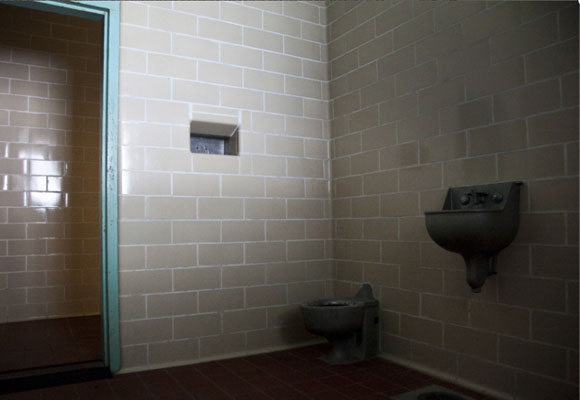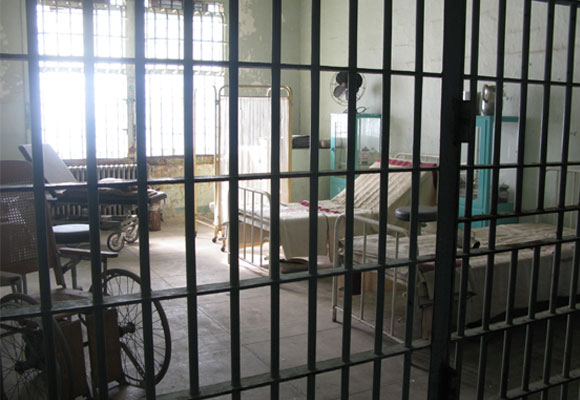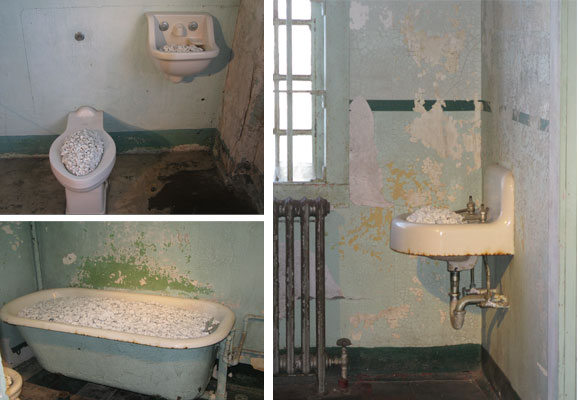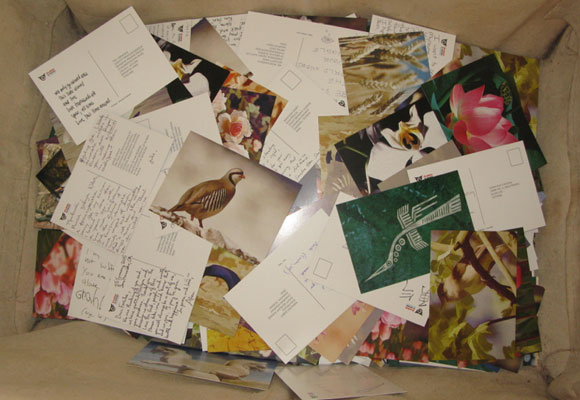Ai Weiwei @Large in the Alcatraz prison
As I write this post I am aware and grateful for the freedom of expression that allows me to voice my opinion
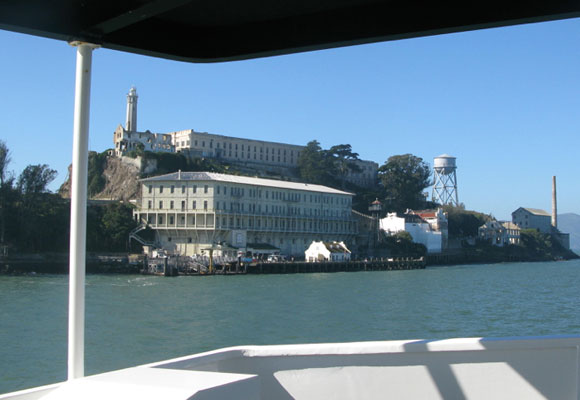
As I write this post I am aware and grateful for the freedom of expression that allows me to voice my opinion when, how and where I want, as well as the privilege of living in a democracy. The events of two weeks ago in Paris #jesuischarlie and this haunting and brilliant show on Alcatraz island @Large by Chinese artist Ai Weiwei should make you reflect on the things that we take for granted.
“The misconception of totalitarianism is that freedom can be imprisoned. This is not the case. When you constrain freedom, freedom will take flight and land on a windowsill”, Ai Weiwei.
The Chinese artist Ai Weiwei is internationally renowned for work that defies the distinction between art and activism. In this exhibition of new works created specifically for Alcatraz, Ai responds to the island’s layered legacy as a 19th-century military fortress, a notorious federal penitentiary, a site of Native American heritage and protest, and now one of America’s most visited national parks. Revealing new perspectives on Alcatraz, the exhibition raises questions about freedom of expression and human rights that resonate far beyond this particular place.
Arriving at the prison island on the ferry from the docks of San Francisco is already a way of preparing you mentally for what you are about to experience. A big looming rock formation in the middle of the icy cold and wind-swept bay, the prison walls raise straight up in front of you , the small windows steel structures and barbed wire remind you all the time that you are in America’s once most infamous high security prison and the home of Al Capone and George “machine gun” Kelly.
Ai’s sculpture, sound, and mixed-media installations occupy four locations in the former prison, these areas are usually restricted to the public, but all are open throughout the run of the exhibition. @Large turns Alcatraz into a space for dialogue about how we define liberty and justice, individual rights and personal responsibility. The artworks directly and imaginatively address the situation of people around the world who have been deprived of their freedom for speaking out about their beliefs — people like Ai himself.

A vocal critic of his nation’s government, Ai was secretly detained by Chinese authorities for 81 days in 2011, and is still not permitted to travel outside China. As a result, the artist was unable to visit Alcatraz during the planning of this exhibition; he developed the artwork at his studio in Beijing, with the help of the FOR-SITE Foundation. But constraints have only galvanized the artist’s commitment to art as an act of conscience. With this project, he aims to expand our understanding of “the purpose of art, which is the fight for freedom”.
When you get to the first of the 4 buildings that house the show , all that you see around you is broken glass, smashed toilets and rubble everywhere. And then a huge bright silk dragon.
WITH WIND
Both delicate and fearsome, the traditional Chinese dragon kite embodies a mythical symbol of power. Ai Weiwei unfurls a spectacular contemporary version of this age-old art form inside the New Industries Building. He says that for him, the dragon represents not imperial authority, but personal freedom: “everybody has this power.” The individual kites that make up the dragon’s body carry quotations from activists who have been imprisoned or exiled, including Nelson Mandela, Edward Snowden, and Ai himself.
Scattered around the room are other kites decorated with stylized renderings of birds and flowers. These natural forms allude to a stark human reality: many are icons for nations with records of restricting their citizens’ human rights and civil liberties.
Ai’s studio collaborated with Chinese artisans to produce the handmade kites, reviving a craft that has a diminishing presence in China. By confining the kites inside a building once used for prison labor, the artist suggests powerful contradictions between freedom and restriction, creativity and repression, cultural pride and national shame. He also offers a poetic response to the layered nature of Alcatraz as a former penitentiary that is now an important bird habitat and a site of thriving gardens.
TRACE
While With Wind uses natural and mythical imagery to reference the global reality of political detainment, this installation at the rear of the New Industries Building gives that reality a human face — or many individual faces. The viewer is confronted with a field of colorful images laid out flat across the expanse of the floor: portraits of 176 people from around the world who have been imprisoned or exiled because of their beliefs or affiliations, most of whom were still incarcerated at the time the artwork was made. Ai Weiwei has called them “heroes of our time.” If the sheer number of individuals represented is overwhelming, the impression is compounded by the intricacy of the work’s construction: each image was built by hand from LEGO bricks. (Some portions of the artwork were assembled in the artist’s studio, while others were fabricated to the artist’s specifications by more than 80 volunteers in San Francisco.) Assembling a multitude of small parts into a vast and complex whole, the work may bring to mind the relationship between the individual and the collective, a central dynamic in any society and a particularly charged one in contemporary China.
See designs for the portraits and learn about the people represented below, or download a guide to the artwork (PDF). Ai Weiwei selected these individuals based on information provided by Amnesty International and other human rights organizations, as well as independent research by the artist’s studio and the FOR-SITE Foundation. Research was completed in June 2014; the status of some detainees may have changed since that time. For more information about prisoners of conscience, visit the Amnesty International website.
This is the list by country of the 176 people around the world who have been imprisoned : “these are non violent people who have lost their freedom simply because they expressed their ideas…..in truth they are the heroes of our time”, Ai WeiWei.
REFRACTION
From the New Industries Building’s lower gun gallery, where armed guards once monitored prisoners at work, visitors peer through cracked and rusted windows to glimpse an enormous metal wing on the floor below. Its design is based on close observation of the structure of real birds’ wings, but in place of feathers, the artwork bristles with reflective panels originally used on solar cookers in Tibet, a region that has long struggled under Chinese rule.
Like With Wind on the floor above, this piece uses imagery of flight to evoke the tension between freedom — be it physical, political, or creative — and confinement. The sculpture’s enormous bulk (it weighs more than five tons) and constrained position on the lower floor keep it earthbound, but one might imagine its array of solar panels silently mustering energy, preparing for takeoff.
By requiring visitors to view the work from the gun gallery, the installation implicates visitors in a complex structure of power and control. Following in the footsteps of prison guards, visitors are placed in a position of authority, and yet the narrowness of the space creates a visceral feeling of restriction.
ILLUMINATION
One of the most haunting spaces in the prison — a pair of tiled chambers in the Hospital once used for the isolation and observation of mentally ill inmates — resonates with the sound of Tibetan and Native American chanting in this austere and moving installation. The Tibetan chant is a Buddhist ceremony for the goddess Palden Lhamo, protectress of Tibet; it was recorded at the Namgyal Monastery in Dharamsala, India, a monastery historically associated with the Dalai Lama. The Hopi music comes from a traditional Eagle Dance invoking the bird’s healing powers. Hopi men were among the first prisoners of conscience on Alcatraz, held for refusing to send their children to government boarding schools in the late 19th century. (For information about Hopi prisoners on Alcatraz, visit the National Park Service website.)
Drawing pointed parallels between China and the United States, the work pays homage to people who have resisted cultural and political repression — whether Tibetan monks, Hopi prisoners, or the Indians of All Tribes who occupied Alcatraz from 1969 to 1971. The placement of the chants in the psychiatric observation rooms suggests an unexpected analogy: like subjugated peoples, those who have been classified as mentally ill have often been dismissed, deprived of rights, confined, and observed. Under the severe circumstances of incarceration, chanting could serve as a source of emotional comfort, spiritual strength, and cultural identity.
BLOSSOM
In this work, Ai Weiwei quietly transforms the utilitarian fixtures in several Hospital ward cells and medical offices into delicate porcelain bouquets. The artist has designed intricately detailed encrustations of ceramic flowers to fill the sinks, toilets, and tubs that were once used by hospitalized prisoners.
Like With Wind in the New Industries Building, Blossom draws on and alters natural imagery as well as traditional Chinese arts. Rather than referring to national iconography, however, the flowers here carry other associations. The work could be seen as symbolically offering comfort to the imprisoned, as one would send a bouquet to a hospitalized patient. The profusion of flowers rendered in a cool and brittle material could also be an ironic reference to China’s famous Hundred Flowers Campaign of 1956, a brief period of government tolerance for free expression that was immediately followed by a severe crackdown against dissent.
YOURS TRULY
While several other works in the exhibition expand visitors’ awareness of prisoners of conscience around the world, this installation in the Dining Hall offers visitors the opportunity to correspond directly and personally with individual prisoners. Visitors are invited to write postcards addressed to some of the detainees represented in Trace, the series of portraits in the New Industries Building. The postcards are adorned with images of birds and plants from the nations where the prisoners are held. Cards are gathered and mailed by @Large Art Guides.
Ai Weiwei has spoken of the deep feeling of isolation that afflicts incarcerated people. He says that political prisoners often fear that they — and the causes they fought for — have been forgotten by the outside world. This work is a response to those concerns, reminding detainees that they are remembered — and reminding exhibition visitors of the detainees’ individuality and humanity. In the spirit of free expression, visitors may write any message they wish. Yours Truly brings home ideas at the heart of the exhibition: the responsibilities that we all bear as members of a community, and the importance of communication as both a personal expression and a force for social change. For information about individual prisoners, visit the Trace page or download a guide to the artwork (PDF).
I leave the island of Alcatraz very sad and moved by this show and very thankful for everything I have and specially for the people who lost their freedom so that we could enjoy ours.
Here are some more views of Alcatraz. Haunting. Dramatic. I cannot imagine what It must have felt like for the prisoners to see the city lights of San Francisco across the icy dangerous waters every night , so close and yet so inaccessible.
The Occupation of Alcatraz was an occupation by the group Indians of All Tribes (IAT). The Alcatraz Occupation lasted for nineteen months, starting in November 1969 by the Sioux until June 1971, and was forcibly ended by the US government. More Photographs at http://www.fashionsphinx.com/ai-weiwei-large-in-the-alcatraz-prison/

